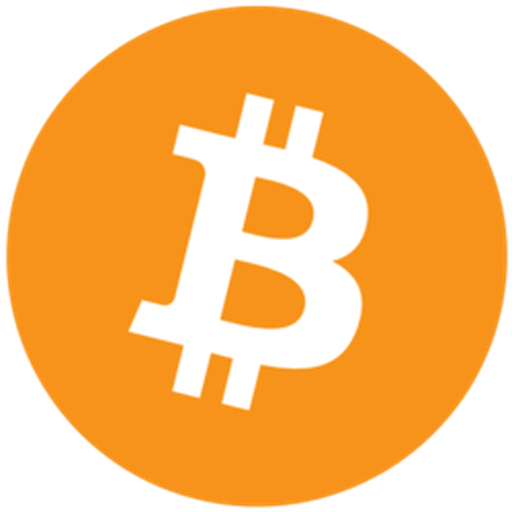Bitcoin vs Mantle Bridged USDT (Mantle) – Price, Market Cap & Performance Compared
Which coin performs better – Bitcoin or Mantle Bridged USDT (Mantle)?
We compare the current price (113 413 $ vs 1.004 $), market cap (2 259 897 570 352 vs 499 304 540) and all-time high (124 128 vs 1.26).
Find out which one stands out right now!
Bitcoin is currently trading at 113 413 $, while Mantle Bridged USDT (Mantle) stands at 1.004 $. These cryptocurrencies differ not only in price but also in market presence.
The market cap of Bitcoin is around 2 259 897 570 352, and Mantle Bridged USDT (Mantle) has about 499 304 540. Their respective all-time highs are 124 128 for Bitcoin and 1.26 for Mantle Bridged USDT (Mantle).
Daily trading volume and the 24h price change (1.3122 % vs 0.78004 %) also offer key insights.
Compare all metrics now and see which coin fits your investment strategy best!
Bitcoin
Bitcoin stands as the pioneering cryptocurrency that introduced the world to the concept of decentralized digital currencies. It operates on a peer-to-peer network that allows users to exchange value without the need for intermediaries like banks or financial institutions. As a decentralized form of currency, Bitcoin has sparked a global conversation about the future of money and has paved the way for the development of thousands of other cryptocurrencies.
more informationMantle Bridged USDT (Mantle)
Mantle Bridged USDT is a unique asset within the cryptocurrency space that facilitates seamless value transfer across different blockchain networks. By leveraging cross-chain technology, it enhances liquidity and ensures greater flexibility for users looking to manage their digital assets efficiently. Its integration into multiple ecosystems highlights its role in promoting interoperability and expanding the utility of stablecoins within decentralized finance (DeFi) environments.
more information

|

|
|
|
|
General Information |
|
|---|---|
|
Title
Bitcoin
|
Title
Mantle Bridged USDT (Mantle)
|
|
Symbol
btc
|
Symbol
usdt
|
|
Whitepaper
|
Whitepaper
-
|
|
Website
|
Website
|
|
Community
|
Community
-
|
|
Last Updated
2025-09-24 23:29
|
Last Updated
2025-09-24 23:29
|
Price Data |
|
|---|---|
|
Current Price $
113 413 $
|
Current Price $
1.004 $
|
|
High 24h
113 941 $
|
High 24h
1.014 $
|
|
Low 24h
111 369 $
|
Low 24h
0.99093 $
|
|
Price Change 24h
1 468.93 $
|
Price Change 24h
0.00777 $
|
|
Price Change % 24h
1.3122 %
|
Price Change % 24h
0.78004 %
|
Market Data |
|
|---|---|
|
Market Cap
2 259 897 570 352
|
Market Cap
499 304 540
|
|
Total Volume
46 418 216 381
|
Total Volume
9 608 849
|
|
Market Cap Change 24h
29 438 330 305
|
Market Cap Change 24h
4 507 049
|
|
Market Cap Change % 24h
1.31983 %
|
Market Cap Change % 24h
0.91089 %
|
|
Return on Investment (ROI)
-
|
Return on Investment (ROI)
-
|
Supply and Availability |
|
|---|---|
|
Circulating Supply
19 925 728
|
Circulating Supply
498 049 461
|
|
Total Supply
19 925 728
|
Total Supply
498 049 461
|
|
Max Supply
21 000 000
|
Max Supply
-
|
Historical Data |
|
|---|---|
|
All Time High (ATH)
124 128
|
All Time High (ATH)
1.26
|
|
ATH Change %
-8.71521 %
|
ATH Change %
-20.7170 %
|
|
ATH Date
2025-08-14 00:37
|
ATH Date
2024-03-27 05:23
|
|
All Time Low (ATL)
67.81
|
All Time Low (ATL)
0.86991
|
|
ATL Change %
167 002 %
|
ATL Change %
15.2883 %
|
|
ATL Date
2013-07-06 00:00
|
ATL Date
2024-03-15 09:13
|
Bitcoin
An Ageless Pioneer: Bitcoin
Bitcoin, symbolized as BTC, often referred to as the "digital gold," stands as a robust innovation in the world of cryptocurrencies. Since its inception, Bitcoin has served as a cornerstone in the rapidly evolving blockchain ecosystem. Let's explore the foundation it has built, the challenges it faces, and the potential it holds for the future.
The Advantages of Bitcoin
Bitcoin’s primary advantage lies in its decentralized nature. Unlike traditional currencies, Bitcoin is not governed by any central authority, providing a sense of autonomy and financial freedom to its users. Transactions are conducted on a peer-to-peer network, reducing transaction times and associated fees, especially for international payments. Furthermore, Bitcoin provides a level of transparency and security through a public ledger known as the blockchain, ensuring each transaction is secure and immutable.
Bitcoin has been praised for being a hedge against inflation. As a deflationary currency with a capped supply of 21 million coins, it becomes a valuable asset in times when traditional currencies face devaluation.
The Disadvantages of Bitcoin
Despite its numerous advantages, Bitcoin is not without its challenges. The most significant being its price volatility, which can deter those with lower risk tolerance. This volatility can be attributed to several factors including market speculation, regulatory news, and macroeconomic trends.
Additionally, Bitcoin’s scalability is a concern. The network can only process a limited number of transactions per second, leading to higher fees and slower transaction times during peak usage. Also, although pseudonymous, Bitcoin transactions can be tracked on the blockchain, which might concern users seeking greater privacy.
Development History
Since its launch in 2009 by the pseudonymous Satoshi Nakamoto, Bitcoin has undergone significant changes and growth. Initially met with skepticism, its adoption has surged over the years, leading to increased investment from individuals and institutions alike. Bitcoin’s evolution is marked by several key moments, such as the introduction of the Lightning Network to enhance scalability, and the increased interest in Bitcoin as a legitimate investment vehicle.
Future Prospects of Bitcoin
Looking ahead, Bitcoin holds immense potential as a mainstream currency and a digital store of value. As technologies improve, scalability and energy efficiency may no longer remain bottlenecks. Bitcoin could see widespread adoption as it integrates with existing financial systems and garners regulatory clarity.
Furthermore, the future of Bitcoin could be shaped by its role in the development of decentralized finance (DeFi) platforms and as the base currency against which other cryptocurrencies are valued.
Conclusion
Bitcoin remains a pioneering force in the cryptocurrency world. Despite facing challenges, its strengths and continuous innovations keep it firmly positioned at the forefront of digital currencies. Whether its role as a financial disruptor or as a digital asset, Bitcoin's journey continues to captivate and inspire the evolution of global finance.
Mantle Bridged USDT (Mantle)
Introduction to Mantle Bridged USDT (Mantle)
The Mantle Bridged USDT (Mantle) is a token that has managed to carve a niche for itself in the world of cryptocurrencies, bridging assets across platforms with the aim of enhancing liquidity and facilitating smoother transactions. With a native symbol of USDT, it stands as a variant of Tether USDT that is specifically tuned for interoperability within the Mantle blockchain ecosystem. As of the latest data, the Coin trades at approximately $1.001, maintaining its peg to the US dollar.
A Glance at Historical Performance
Mantle Bridged USDT reached its all-time high of $1.26 in March 2024, a significant metric that underscores a period of heightened utility and demand. Conversely, its all-time low of $0.869914 was experienced in the same month, just a few days prior to hitting its peak. This volatility reflects broader market trends and underscores the speculative nature inherent in cryptocurrencies.
Technical Analysis and Market Dynamics
The Mantle Bridged USDT, like other stablecoins, generally exhibits low volatility in its price changes. However, its recent price change of 0.08391% within a 24-hour frame demonstrates minor fluctuations that are typical yet important for traders focused on short-term positions. With a market cap of over $231 million and a similar circulating and total supply, it holds a significant position within its operational ecosystem.
Advantages of Mantle Bridged USDT
The key advantages of using Mantle Bridged USDT revolve around its bridging capability that allows users to leverage cross-chain liquidity. This feature is crucial in today’s multi-chain world, where users often transfer assets across various protocols seeking better yields or lower transaction costs. Additionally, its pegging to the US dollar offers a measure of stability in the highly volatile crypto space.
Potential Drawbacks
Despite these advantages, challenges persist. The reliance on third-party systems for maintaining the pegging mechanism can introduce risks. Moreover, the broader regulatory landscape concerning stablecoins remains uncertain, and any adverse regulatory developments could impact Mantle USDT's operational viability.
Future Prospects
Looking ahead, the future of Mantle Bridged USDT is closely tied to the broader acceptance of blockchain bridging technologies and stablecoins. As decentralized finance (DeFi) continues to expand, the demand for reliable and liquid bridging solutions like Mantle should grow, potentially driving further adoption. However, ongoing innovation and adaptation are critical to maintaining competitiveness and compliance within rapidly evolving crypto regulations.

